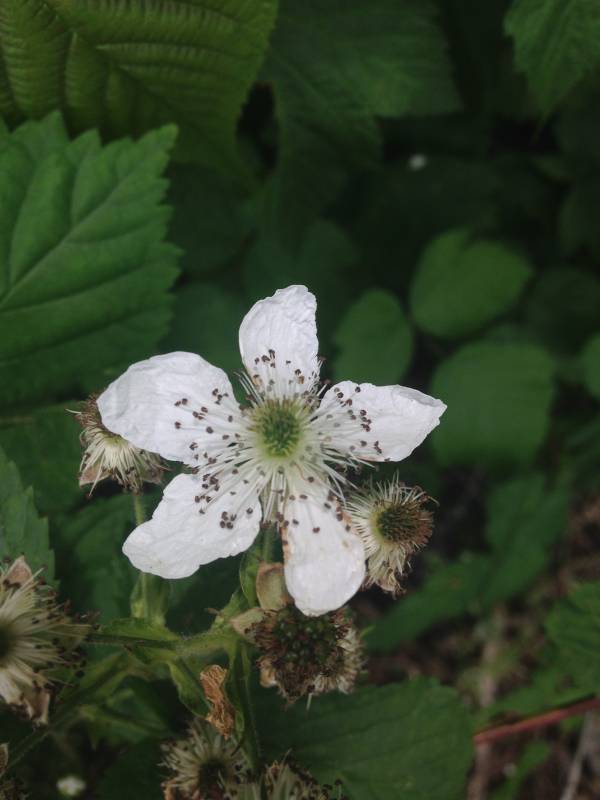Rubus spectabilis
Rubus pensilvanicus
salmonberry
Pennsylvania blackberry
Leaves trifoliate, the leaflets ovate, nearly glabrous, doubly serrate, the terminal one 4-9 cm. long, the others smaller, often lobed.
Flowers 1-2 on short leafy branches;
calyx pubescent, the 5 lobes ovate-lanceolate, pointed, spreading, 9-15 mm. long;
petals 5, purplish-red, obovate-elliptic, half again as long as the sepals;
stamens 75-100;
pistils numerous.
Drupelets yellow to reddish, weakly coherent, coming free from the receptacle.
Rubus spectabilis
Rubus pensilvanicus
Occurring chiefly west of the Cascades crest in Washington; Alaska to California, disjunct in northern Idaho.
Occurring west of the Cascades crest in Washington; British Columbia to California also occurring in western Idaho; otherwise in central and eastern North America, where native.
- Local floras:
BC,
CA,
OR,
WA
- Local Web sites:
CalFlora,
CalPhotos,
Flora NW,
PNW Herbaria,
Turner Photog.
WildflowerSearch
iNaturalist (observations)
USDA Plants Database
- LBJ Wildflower Center
- SEINet
- Plants of the World Online
- Encyclopedia of Life
- Wikipedia
- Google Image Search



